 |
|
Beijing residents engage in outdoor exercise, despite the heavy smog which has blanketed about 1.43 million square kilometers across northern China during the last seven days. Wei Xiaohao / China Daily |
"Studies overseas have concluded that particulate matters formed by burning oil are more hazardous than those formed by burning coal," said Kan Haidong, a professor at Fudan University's School of Public Health.
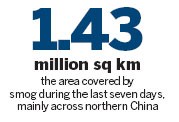 |
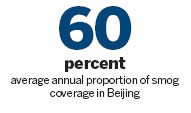 |
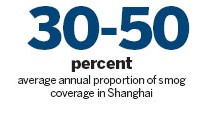 |
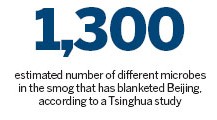 |
He said the concentration of organic compounds in PM2.5 is between 20 percent and 30 percent. However, that figure can rise to more than 70 percent in PM1 - ultrafine particulate matter with a diameter of less than 1 micron - and scientists believe that the increased concentration means PM1 poses a greater risk to human health than PM2.5.
"Although Beijing is more frequently enveloped by smog than Shanghai, the PM2.5 levels in the two cities are similar during bad weather. But when it comes to the more-hazardous PM1, the level in Shanghai is higher than in Beijing, which is why visibility in Shanghai is usually poorer than in Beijing during smoggy conditions," said Zhuang, who has worked in the field of atmospheric chemistry for 30 years.
Extremely high temperatures can also increase the links between airborne pollution and premature death. In southern cities where mean daily temperatures are much higher than in the north, residents are more likely to have an increased exposure to pollution because they have a greater exposure to high temperatures, according to a study led by Kan's team in 2011, which focused on eight cities across the country.
Defining function
Those differences lead to wide fluctuations in the Exposure-Response Function, a key factor used to measure the health risk posed by airborne pollution in different regions. It is calculated by measuring the rise in the number of premature deaths associated with a 10-microgram-per-cubic-meter increase in the concentration of pollutants.
The relationship between mortality rates and exposure to particulate matter ranging from low to high concentrations suggests that the exposure-response curve often flattens out at higher concentrations, according to a 2009 study led by Arden Pope, a professor of economics at Brigham Young University who is also one of the world's foremost experts in environmental science. The Pope's conclusion has been verified by studies in China and a number of other countries.
The exposure-response function in the southern city of Guangzhou is more than seven times higher than in Xi'an, but the average concentration of PM2.5 in Xi'an is more than twice that in Guangzhou, said Wang Jinnan, vice-president of the Chinese Academy for Environmental Planning, quoting findings from an unpublished 2012 report conducted by the Environmental Protection Ministry.
Moreover, a 2012 study conducted by researchers from China and Australia, discovered that in Brisbane, the risk of premature death as a result of airborne pollution is approximately 7.5 times higher than in Beijing, even though the Chinese capital is about 7.6 times more polluted.The exposure-response function is important because it's a determining factor in the calculation of premature deaths per region as a result of airborne pollution. The factor used can make a vast difference to the results of scientific studies.
A 2010 study, jointly conducted by the World Bank, the World Health Organization and the Chinese Academy for Environmental Planning, concluded that in China, 350,000 to 500,000 people die prematurely every year as a result of outdoor air pollution.
|
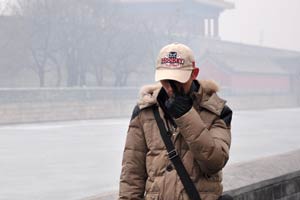 |
 |
 |
|
|
|
|
|
|
|
|